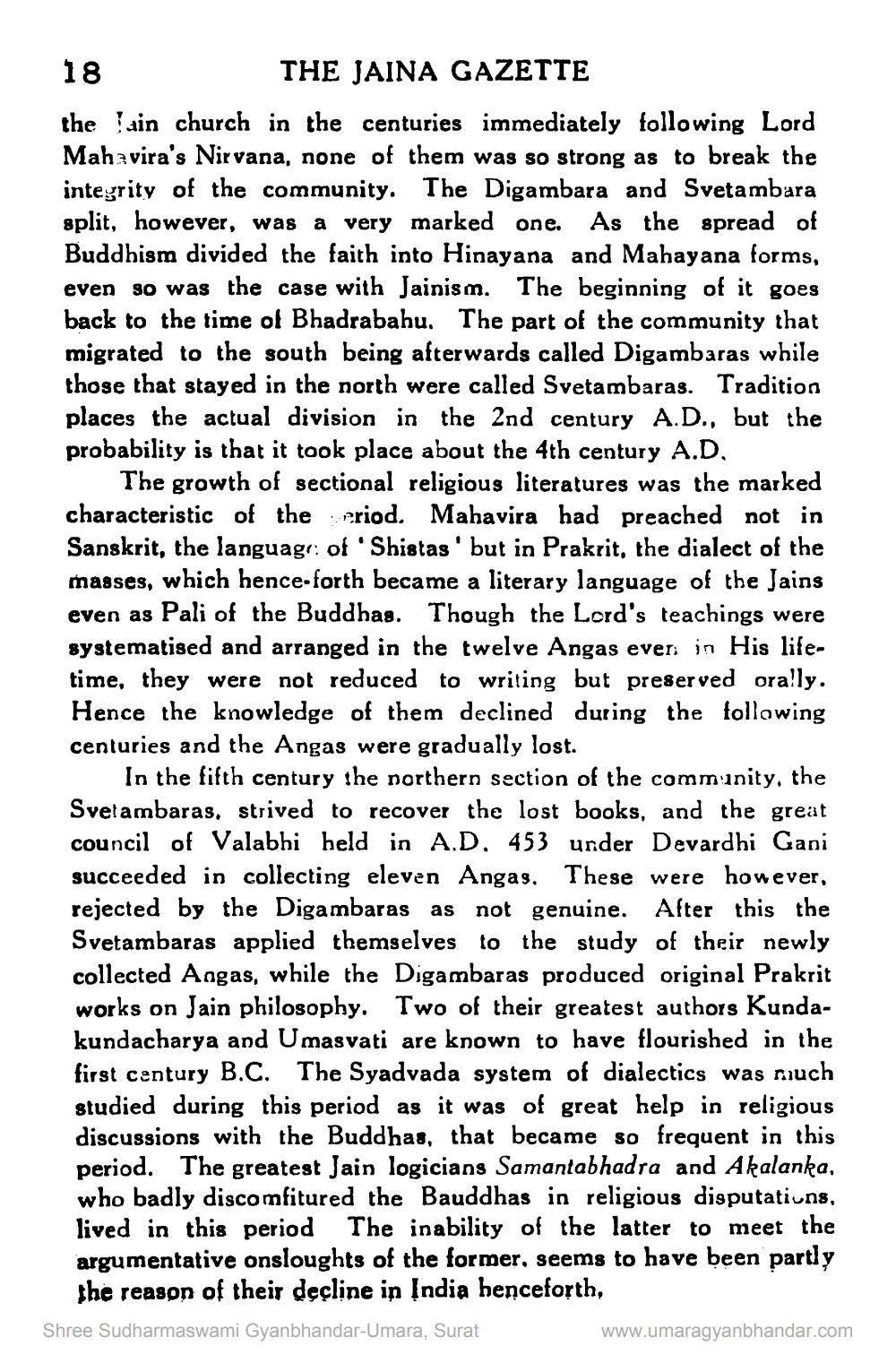________________
18
THE JAINA GAZETTE
the Jain church in the centuries immediately following Lord Mahavira's Nirvana, none of them was so strong as to break the integrity of the community. The Digambara and Svetambara split, however, was a very marked one. As the spread of Buddhism divided the faith into Hinayana and Mahayana forms, even so was the case with Jainism. The beginning of it goes back to the time of Bhadrabahu. The part of the community that migrated to the south being afterwards called Digambaras while those that stayed in the north were called Svetambaras. Tradition places the actual division in the 2nd century A.D., but the probability is that it took place about the 4th century A.D.
•
The growth of sectional religious literatures was the marked characteristic of the period. Mahavira had preached not in Sanskrit, the language of Shistas' but in Prakrit, the dialect of the masses, which hence-forth became a literary language of the Jains even as Pali of the Buddhas. Though the Lord's teachings were systematised and arranged in the twelve Angas ever in His lifetime, they were not reduced to writing but preserved orally. Hence the knowledge of them declined during the following centuries and the Angas were gradually lost.
In the fifth century the northern section of the community, the Svelambaras, strived to recover the lost books, and the great council of Valabhi held in A.D. 453 under Devardhi Gani succeeded in collecting eleven Angas. These were however, rejected by the Digambaras as not genuine. After this the Svetambaras applied themselves to the study of their newly collected Angas, while the Digambaras produced original Prakrit works on Jain philosophy. Two of their greatest authors Kundakundacharya and Umasvati are known to have flourished in the first century B.C. The Syadvada system of dialectics was much studied during this period as it was of great help in religious discussions with the Buddhas, that became so frequent in this period. The greatest Jain logicians Samantabhadra and Akalanka, who badly discomfitured the Bauddhas in religious disputations, lived in this period The inability of the latter to meet the argumentative onsloughts of the former, seems to have been partly the reason of their decline in India henceforth,
Shree Sudharmaswami Gyanbhandar-Umara, Surat
www.umaragyanbhandar.com




